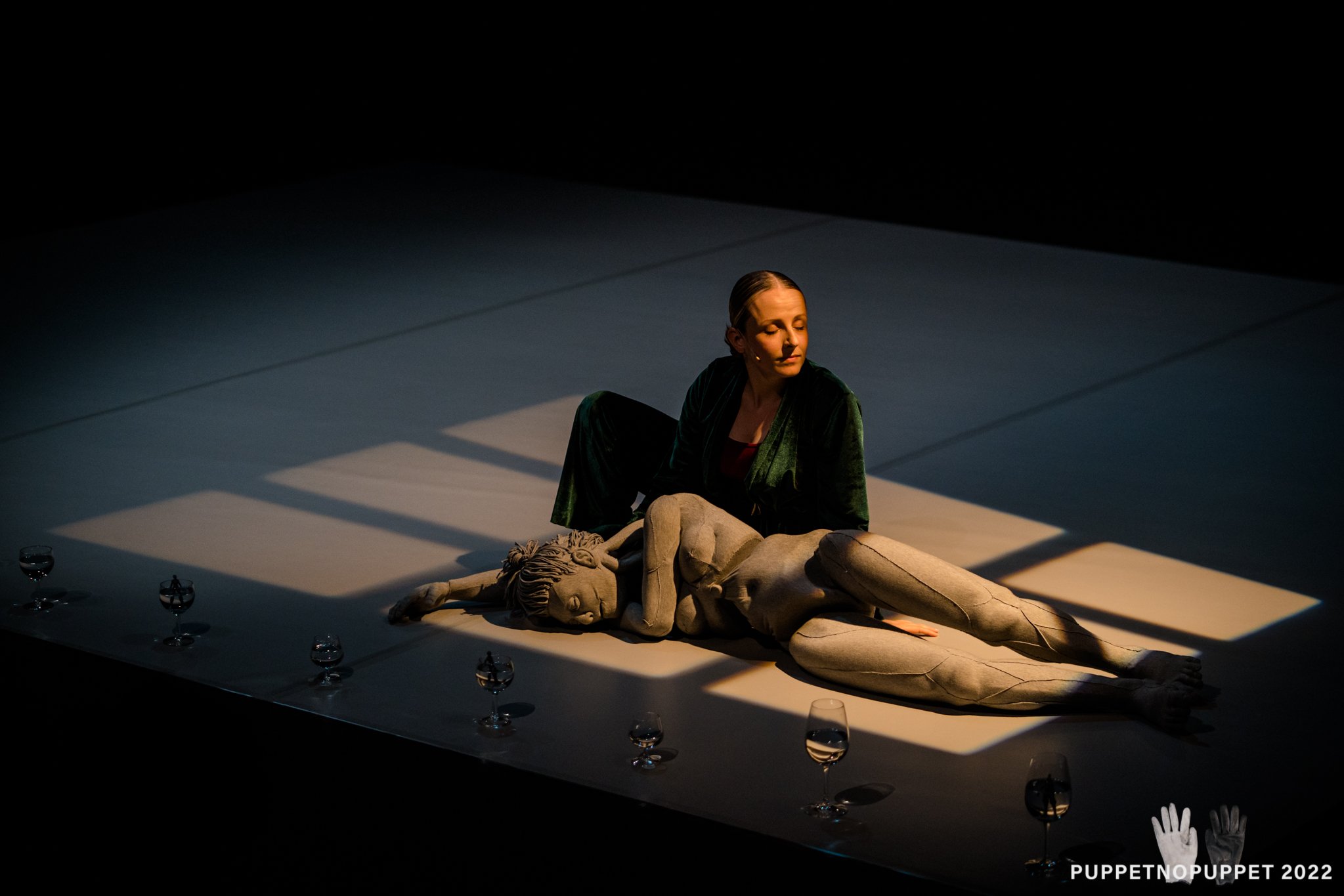the art of loving and destroying oneself
critical review of Romance (Romans) by Natalia Sakowicz (Poland). work presented during the 10th International Festival of Puppetry Schools PUPPETNOPUPPET (LALKANIELALKA) in Bialystok, Poland, on June 2022. this text is written by amilton de azevedo within the context of the Puppet Theater Criticism Workshop offered by the International Association of Theater Critics (IATC).
While the audience is entering the theater for “Romance” (“Romans”), Natalia Sakowicz and her full-body female puppet are kindly watching and smiling. Slowly, the two of them will start to look and touch each other. It is a profound and sensitive take on recognition, through identification, of oneself. The puppet is then completely humanized, in a relation that appears to be horizontal; sometimes, it is even hard to tell who’s conducting who.
Listening to each other’s heartbeats, the two women appear to be falling in love. Passion is a beautiful and intense dance, and Sakowicz’s choreography is beautifully executed as a couple is formed right in front of our eyes. Whilst the puppet seems to pay very close attention, the performer uses a water glasses-based sound device to produce an electronic soundscape for her monologue to the audience, where she describes the pleasures of the body and their effects on oneself. After all, there is a “Romance” going on.
Recognition, passion, love, and then comes the routine. As there were no subtitles, non-polish speakers could only imagine what the dialogue between them were as they sat within a window-designed lightning. Because of the kindness in their voices and actions, it seemed like a cute moment in the everyday life of a couple. Nevertheless, the text was revealing the abusive nature of that relationship.
Routine is followed by apathy: as the puppet mounts over Sakowicz and kisses her neck, with sexual intentions, she doesn’t seem to care. Apathy then turns into violence, with the performer aggressively disrespects their companion’s body, shrinking it in a completely non-natural way. The physical abuse intensifies as she’s tossing the pupper around. At the same time, Sakowicz is falling on the ground attempting to lay in the exact same position. In many ways, destroying another being is actually destroying yourself.
“Romance” gets really brutal as the puppet gets torned apart by the artist. Totally dehumanized, now there are only pieces of what was once the representation of life and love. As Sakowicz starts dancing again, she appears to relive the entire act – but now, she’s the puppet; and there is no puppeteer. The mirroring brings up the possibility that, all the time, the performance was about how one relates to themself and their own body.
At the very end, the core and head of the dismantled puppet now looks like a baby. Death becomes renewal and reconciliation seems to be possible as Sakowicz breastfeeds her(self?). Visually impressive, considering the performer’s technique on puppeting, dancing and acting, “Romance” can be seen as a solo or a duo. It is about human relations, but also about (dealing with) trauma and respecting yourself and others, being inevitably crossed by gender issues.
Human complexity makes it possible to intertwine emotions that could be considered paradoxical – love and hate – and turn them into equally contradictory actions – caring and destroying – in a single relationship. Whether it is the one we cultivate through our entire lives with ourselves, whether it is the bonds we build with others. It is said that loving is caring; “Romance” shows that this is not quite simple.
[be a supporter of amilton de azevedo’s critical production: meet the continuous crowdfunding campaign keeping the ruin alight!]

